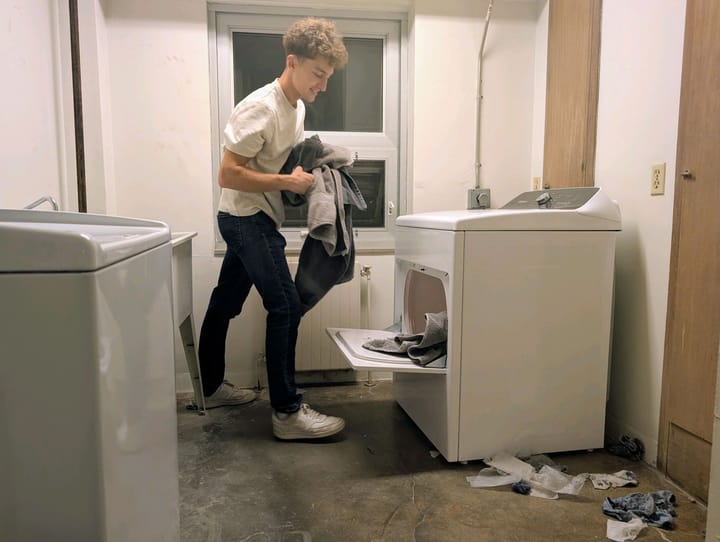Students, professors consider effectiveness of QR codes
After five weeks of in-person classes have continued with minimal interruption for the majority of Augustana students and faculty, contact tracing through QR codes may be coming to a close.
An email sent strictly to faculty on Sept. 28 stated that, “Contact tracing has found no evidence of COVID spread in classrooms. There is confidence that current desk spacing, plus masking, is providing a great deal of safety.”
Rick Tupper, the associate vice president for safety and logistics, said Sept. 29 that the university contact tracing team is continuing to monitor how classrooms are set up and being used for contact tracing. But QR codes haven’t necessarily been as useful as originally intended.
“The use of QR codes has not yet taken off,” Tupper said. “For that information to be useful, we would first have to ensure faculty are encouraging students to use the codes.”
Augustana University’s approach to contact tracing in classrooms came with unclear communication, and while some professors required students to scan the QR code at their desk, others were less strict and simply encouraged students to do so.
“Originally, we were told that they were going to do the contact tracing, and they wanted us to have people sit in the same seats so they could do that,” said communication studies professor John Bart, who teaches in the Fryxell Humanities building. “Then they got the QR codes, and they got them put in the night before classes started. So, the idea is that students do that, and they can trace based on that.”
Senior sign language interpreting major Mariah Mantz said that her interpreting class often takes chairs and sits in a group in the classroom, and therefore, they don’t always have the ability to scan QR codes to enable contact tracing.
“But if we need to use the computers at the stations my professor will say, ‘use the QR codes,’” she said.
Although many students seem to have classroom QR code scanning down pat, the university has yet to send a single email to the student body explaining the use of the codes or to offer guidelines for their use.
“I was wondering, ‘okay, what is this,’” Mantz said, after she arrived for in-person classes for the first time this fall. “I’m a little shocked we aren’t getting more information.”
Senior art education major Sarah Anderson asked, “Do I get to know if the person next to me in class has contracted the coronavirus, or is that confidential? The QR codes were put in the night before classes started, but my art classes in the CVA didn’t have QR codes for the first several days.”
Some students have found that contact tracing in classrooms is good policy, but wish that the university was doing more in its efforts.
“I would say contact tracing is a better effort than nothing,” said freshman Caity Fletcher, who added that even with the university’s contact tracing efforts, on-campus classes are less safe when compared to the option of holding classes online.
“It’s a tradeoff,” she said. “It’s better for students to be with the teacher than by themselves on their laptops.”
Most professors are taking QR code tracing seriously, although some more than others.
“All my teachers, except for one, are just like, ‘Scan it. You gotta scan it. Don’t scan it, can’t start,’” Fletcher said. “We don’t have a seating chart, but everyone usually defaults to sitting by the same people in the same spot.”
In her accounting class taught by business administration professor Cathy Marsh in the Madsen Center, Mantz said Marsh always tells her students, “‘Whip out your phones and do the QR codes.’”
Mantz added, “She does attendance every day, and every day you have to tell her the number of where you’re sitting just to see if you’ve changed.”
At the Froiland Science Complex, lab classrooms allow for spacing, although physical distancing isn’t always possible. “In my science classes, like chem and bio, we try our best for our labs to be socially distanced,” Fletcher explained. “But sometimes you just can’t.”
As the university continues its voyage into uncharted territory this semester, some students and faculty have different procedures toward tracing efforts in classrooms and adherence to COVID-19 protocols.
“I’ve got the seating chart, but I don’t necessarily keep track of who’s there on each day,” Bart said. “I did for a while, but with the QR codes, I guess I was just leaving it up to them.”
With strict contact tracing in classrooms, Fletcher said that the university can at least try to figure out who’s been exposed, and who hasn’t.
“At the least, you can track who sat at what table with someone who may have COVID or track if you’ve been in contact with someone within a different class,” she said.



